|
|
|
|
|
|
|
|
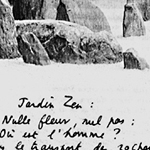 |
|
|
click for the whole picture as a 63k gif
|
|
|
|
|
|
|
|
|
Roland Barthes
L' empire des signes |
|
|
|
|
Roland Barthes essays have been accompanying me in all my journeys
to Japan. Important for my project are the observations of daily
occurrences and the way Barthes transposes them in the grid of
his more universe thinking on semiotic and sign systems. I am
attracted by the charm and easiness he treats his subjects and
by the unexpected but comprehensible associations.
Until now I've found two texts more or less concerning my interests
in the project:
Les années structures, les années révoltes by Bernard Sichère
Mythologies by Tony Mac Neill |
|
|
|
|
|
|
|
|
|
|
 |
|
|
click for the whole picture as a 63k gif
|
|
|
|
|
|
|
Chris Marker
Sans Soleil |
|
|
|
Chris Marker's film from 1980 has been for a long time one of
my very favourite. I adore the poetic way Chris Marker is making
relations between places and time. His accent is not explicitly
cultural comparison, but as a man of the world, travelling with
open eyes he is able to pick and combine substantial material
from the featured places.
Adrian Miles from the Royal Melbourne Institute of Technology University made a huge site on Marker; or go directly to the Sans Soleil related part or the astonishingly extensive bibliography |
|
|
|
|
|
|
|
|
|
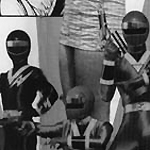 |
|
|
click for the whole picture as a 88k jpg
|
|
|
|
|
|
|
|
Mark Schilling
The Encyclopedia Of Japanese Pop Culture |
|
|
|
|
Mark Schilling's book describes some of the more famous Japanese
pop excrescenses in the recent three decades. For my project this
is very valuable because it can give me more background information
to aspects I've already known (but have not been too familiar
with) or introduces new facts that the non-Japanese world happened
to miss so far... In 67 short, historical descriptive essays the
author covers idols like Miyazawa Rie, Tora-san, Mario or is thinking
about phenomenon like Yakuza movies, Television News, Instant
Ramen or the Sumo Dynasty of the Hanadas for example.
There was an online chat with the author in 1997 by a Tokyo Trend
E-Zine. Read it, learn more about the author or order the book
on this page.
And amazon.com has some reviews as well as the table of content with a list
of all the subjects of the book here. |
|
|
|
|
|
|
|
|
|
|
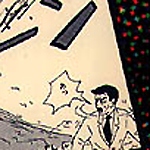 |
|
|
click for the whole picture as a 75k jpg
|
|
|
|
|
|
|
|
Frederik L. Schodt
Dreamland Japan - Writings On Modern Manga |
|
|
|
|
In the sequel to "Manga! Manga! The World Of Japanese Comics"
the author gives additional information to the extensive universe
of drawn picture stories in Japan. Brief essays are introducing
important magazines and leading artists. It is a valuable guide
book which helps through the immense amount of paper one is opposed to studying
this world.
The editor of the book, stonebridge, has more information. |
|
|
|
|
|
|
|
|
|
|
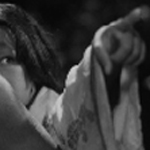 |
|
|
click for the whole picture as a 175k gif
|
|
|
|
|
|
|
|
Kurosawa Akira
Rashomon |
|
|
|
|
Akira Kurosawa's movie comes closest to my ideas about multi-perspective
storytelling: the same story told in four different ways gets
less and less objective. If my project can demonstrate one thing,
then it should be the picture's dependency of their cultural background,
making clear the shift in the representation of a "common reality"
in two different cultures like Europe and Japan and permitting
conclusions about the thinking which is behind the picture production.
To make this mechanics obvious in my culture (through the mirror of the mechanics in Japan) is one
of the ideas behind the project. |
|
|
|
|
|
|
|
|
|
|
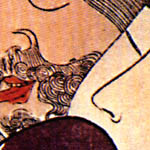 |
|
|
click for the whole picture as a 113k jpg
|
|
|
|
|
|
|
|
Ian Buruma
The Missionary and the Libertine - Love and War in East and West |
|
|
|
A collection of articles from the past 10 years by the asian specialist
Ian Buruma. He namely is the author of Wages of Guilt,1994 and some other books about the East. He works as a journalist in London.
Here are some of the Japan-related chapters in Missionary and Libertine to show the range of his interests Mishima Yukio: The Suicidal Dandy, Oshima Nagisha: Japanese Sex,
Tanizaki Junichiro: The Art of Cruelty, Yoshimoto Banana: Pink
Dreams, Edward Seidensticker: An American in Tokyo, Ghosts of
Pearl Harbor, We Japanese, The Nanny State of Asia.
There is a rather strange kind of review out there; it is not really worth to go and read it! |
|
|
|
|
|
|
|
|
|
|
|
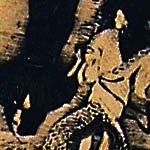 |
|
|
click for the whole picture as a 75k jpg
|
|
|
|
|
|
|
|
Donald Richie and Joseph I. Anderson
The Japanese Film -Art and Industrie |
|
|
|
|
Richie/Anderson's standard work on Japanese cinema with "all"
the information on the history of the seventh art in this country
from the beginning until the eighties (together with his update
from 1989). |
|
|
|
|
|
|
|
|
|
|
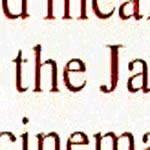 |
|
|
click for the whole picture as a 50k jpg
|
|
|
|
|
|
|
|
Noel Burch
To the Distant Observer |
|
|
|
|
Burch's interesting attempt to consider the Japanese movie production
as a critique of the western Hollywood narrative cinema. Above
all he cites Mizoguchi and Ozu and their aesthetical strategies
to establish a theory of critique. As clearly pointed out in Lehman's
article (see below) this attempt in the tradition of French structuralism
and marxist theories is not without questionable projections using
the "otherness of the orient".
There is a highly informative introduction and a big amount of
pictures to Burch's book by J.A. Murphy, University of Florida with the title "Japanese Film as a Critique of Hollywood Realist Narrative Cinema"
And some additional "Notes for Noel Burchs To The Distant Observer" by Abe Marc Nornes at: |
|
|
|
|
|
|
|
|
|
|
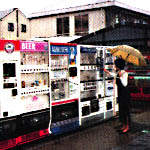 |
|
|
click for the whole picture as a 75k jpg
|
|
|
|
|
|
|
|
James Mak, Shiam Sunder, Shigeyuki Abe, Kazuhiro Igawa
Japan: Why it Works, Why it doesn't - Economics in Everyday Life |
|
|
|
Japan has many features in which it differs from any other, especially
western countries. Some of them are recorded in statistics (Statistics Bureau , Government of Japan or Japan Information Network), others are just attracting the foreigner's eye by their sheer
occurrence.
The five authors of the book take some of the statistics, where
Japan writes extraordinary digits and try to explain it simply.
So you will learn for example why there are so many small shops in Japan, why rice is so expensive in Japan, why Japan is the paradise of vending machines
or if Japan is an egalitarian society or why doctors describe so many pills. |
|
|
|
|
|
|
|
|
|
|
|
 |
|
|
click for the whole picture as a 75k jpg
|
|
|
|
|
|
|
|
Sharon Lockhart
Goshogaoka |
|
|
|
|
1997, 16 mm, color, 63 Min
This film which I have seen at the Image Forum Festival '98 in
Osaka impressed me mainly due to its austere form, fitting to
the rigid exercise
routines and drills of a girls' basket ball team. Filmed in a
middle-school gymnasium in suburban Japan, the film consists of
six ten-minute takes, in which the various cadences of chanting
voices and bodily movements digress into distinct studies; together,
they construct a subtle and multi-layered social portrait framed
within a study of choreographed movement.
Once more I was shocked by a learning system which is based on
mechanic drills, rather than joy, playing or creativity.
There is a review of the film on the occasion of its screening at the sundance
film festival. |
|
|
|
|
|
|
|
|
|
|
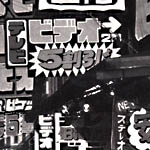 |
|
|
click for the whole picture as a 175k jpg
|
|
|
|
|
|
|
John Clammer
Contemporary Urban Japan - a Sociology of Consumption |
|
|
John Clammer is Professor of Comparative Sociology and Asian Studies
at Sophia University, Tokyo. I haven't yet started to read his
book, but the blurb (Klappentext) sounds interesting: This volume demonstrates a fresh approach to urban studies as
well as a new way of looking at contemporary Japan which links
economy and society in an innovative way.
Just in case anybody is interested, here is a rather large Bibliography on Consumption-Mediated Youth Identity in Urban Japan. |
|
|
|
|
|
|
|
|
|
|
Articles |
|
|
|
|
de Bary, Brett. Review of To the Distant Observer, Journal of Japanese Studies
8.2 (Summer 1982): 405-410.
Felperin, Leslie. John Sayles: Walking Alone, Sight and Sound 6.9 (September 1996):
22-23.
Greenfield, Karl Taro. "Otaku: the Incredibly Strange Mutant Creatures Who Rule the
Universe of Alienated Japanese Zombie Computer Nerds (Otaku to
You)," Wired 1.1 (1993): 66-69. read it!
Izbicki, Joanne. "The Shape of Freedom: The Female Body in Post-Surrender Japanese
Cinema" U.S.-Japan Women's Journal 12 (1997): 103-153.
Lehman, Peter. "The Mysterious Orient, the Crystal Clear Orient, the Non-existent
Orient: Dilemmas of Western Scholars of Japanese Film," Journal
of Film and Video 39 (Winter 1987): 5-15.
Malcomson, Scott L. "The Pure Land Beyond the Sea: Barthes, Burch and the Uses of
Japan," Screen 26.3,4 (May/August 1985): 23-33.
McDonald, Keiko Iwai. "Family, Education, and Postmodern Society: Yoshimitsu Morita's
The Family Game," East-West Film Journal 4.1 (December 1989):
53-68.
Schilling, Mark. "Into the Heartland with Tora-san," Japan Quarterly 40.2 (April-June
1993): 199-206.
Silverberg, Miriam. "Remembering Pearl Harbor, Forgetting Charlie Chaplin, and the
Case of the Disappearing Western Woman: a Picture Story," Positions
1.1 (Spring 1993): 24-76.
Ueno Toshiya. "The Beginnings of Cinema the Outside of Cinema," in 7 Spectres,
ed. Abe' Mark Nornes and Fukushima Yukio (Yamagata/Tokyo: Yamagata
International Documentary Film Festival, 1995). [Essay exploring
connections between Walter Benjamin and Nakai Masakazu.]
|
|
|